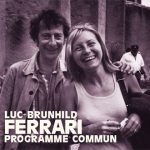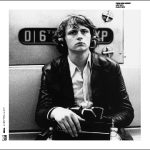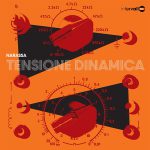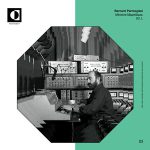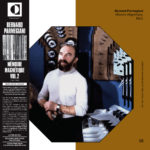In Defense Of The Machine
13,00 € VAT Included
Only 2 left in stock
CANÇÃO DA PAZ (1965) for baritone voice & tape; INSUBSTITUÍVEL 2ª (1967) for cello & tape; INVOCAÇÃO EM DEFESA DA MÁQUINA (1968) for 4 percussionists, 4 metronomes & tape; MIXOLYDIA (1995) for theremin & tape; MIRÓ ESCUCHÓ MIRÓ (1998) for amplified piano & tape; RITUEL VIOLET (1999) for tenor sax & tape; TOCCATA IRISÉE (2003) for marimba, cuica & tape
“This new cd by Brazilian composer Jorge Antunes, one of the pioneers of electronic music in South America consists of 7 works for instruments and tape, composed between 1965 and 2003.
Canção da Paz was composed in 1965, and is one of the first pieces in Brazilian music history to use a traditional instrument accompanied by pre-recorded electronic sounds. Insubstituível 2ª was written for the cellist Iberê Gomes Grosso (1905-1983). Antunes was an early pioneer in electronic music. The piece, almost entirely written in five beats time signature, has always been well received despite its use of electronic, unusual sounds. In Invocação em defesa da máquina’s first movement, the pre-recorded electronic sounds form a backdrop on which the percussion instruments perform dialogued polyrhythms. In the second movement the four percussionists act as soloists, without the intervention of electronic sounds: this is the reflection of the musician on the theme. The third movement is the consecration of pure electronic music: Music humanizes the machine. The percussionists remain silent, and the soloist is a machine: the equipment that reproduces the pre-recorded electronic sounds. Mixolydia was composed for theremin player Lydia Kavina. The melodic material in Mixolydia is completely based on the scale ti-do-re-mi-fa-so-la-ti, which is precisely the Greek Mixolydian scale used in the fourth century BC. For Miró Escuchó Miró Antunes catalogued and organized Miro’s typology of signs to transform it into a collection of sound objects which are juxtaposed by the piano soloist on the electro-acoustical construction. The piano participates in different ways in the three sections of the work. In Rituel Violet Antunes used his theory of relationship between sounds and colors to construct a background of electronic sustained pitches. The saxophone soloist transforms these virtual trajectories in sounds and in real gestures on stage. The sound material includes concrete sounds produced directly on the strings of a piano and also electronic and computer generated sounds. Toccata Irisée is written for a percussionist who plays marimba and cuíca (Brazilian friction drum with a stick). The basic sound material comprises electronic sounds and cuíca sounds. The percussionist’s virtuosity is the strong element in the work. In playing the marimba, the interpreter uses as many as four different drumsticks, two in each hand, to execute melodies accompanied by chords with three and four sounds. The pre-recorded electronic sounds form at once both a backdrop and a support base, upon which the marimba and the cuíca parade expressive syntaxes of musical objects. At the same time the electronic sounds act as references establishing a constant dialogue in complex synchrony with the live performer.
Jorge Antunes was born in 1942, in Rio de Janeiro, where he studied violin, composition and conducting. He also majored in physics at the National Faculty of Philosophy. In 1961, after constructing by himself several generators, filters, modulators and other electronic equipment, Antunes founded the Chromo-Music Research Studio, and has since been recognized as the originator of electronic music in Brazil. In 1965 he began to research the correspondences between sound and colour, and wrote works that he called Cromoplastofonias, for orchestras, magnetic tapes, and lights, also using the senses of smell, taste and touch. Between 1969 and 1973 he won scholarships to study in Buenos Aires, Utrecht and Paris under Alberto Ginastera, Gerardo Gandini, Francisco Kroepfl, Umberto Eco, Luis De Pablo, Gottfried Michael Koenig, Pierre Schaeffer and François Bayle. Antunes is professor of composition at the University of Brasilia and is president of the Brazilian Society for Electroacoustic Music.”



